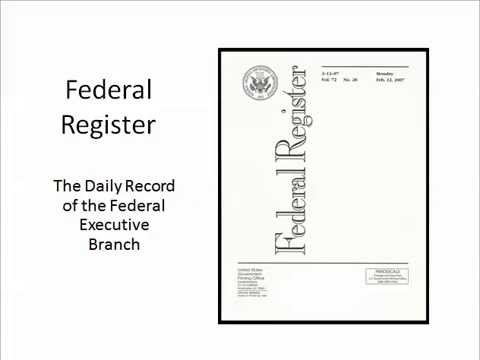The federal register url for this issue is at: https://www.gpo.gov/fdsys/pkg/FR-2016-05-27/pdf/2016-11867.pdf
Page 33742 Federal Register/ Vol. 81, No. 103 / Friday, May 27, 2016 / Rules and Regulations, third column…This is the contents page.
From the BUZZ –
In This section the Added sugars issue is addressed. As we understand it, as this reads, added sugars means sugar added that would be over and above what would normally be contained in a container or vessel of the material listed on the contents section of the label.
For instance, if a juice was concentrated, say, a cup of juice was concentrated to a teaspoon of concentrate that contained all of the natural sugars of the original cup of juice, then, when reconstituted, only three quarters of a cup of water was added, that three quarters of a cup would contain all of the sugar of a full cup, thus, it would have “added sugar” from that original full cup. How this applies to honey, as we interpret it would be that a one pound jar of honey should contain X grams of sugar and state that on the label as a ‘grams/serving”. If no other material is added to that honey…say, HFCS, or cane sugar, or…any kind of other sweetener, that one pound jar of honey WILL HAVE NO ADDED SUGAR. At least that’s the way we see it here.
From the table of contents, on the Federal Register, Vol. 81…
- Added Sugars
- Declaration
(i) Comments on the Rationale for Requiring Mandatory Declaration of Added Sugars
(ii) Evidence on Added Sugars and Risk of Chronic Disease
(iii) New Evidence Presented in the 2015 DGAC Report
- The 2015 DGAC Analysis of Dietary
Patterns and Health Outcomes
- Authority for Labeling
(i) Statutory Authority
(ii) Material Fact
(iii) Regulations Must Bear a Reasonable
Relationship to the Requirements and Purposes of the Statue
- Nutrient Density
- Reformulation
- Calories from Solid Fats and Added Sugars
- Consumer Research and Consumer Use of Added Sugars Declaration
- Voluntary Labeling
- How Added Sugars are Declared
(i) Changing ‘‘Sugars’’ to ‘‘Total Sugars’’
(ii) Declaration of Added Sugars in Teaspoons
(iii) Distinguishing Between Naturally Occurring and Added Sugars on the Label
(iv) Replacing ‘‘Sugars’’ With ‘‘Added Sugars’’
(v) Distinguishing Between Different Types of Sugars or Sweeteners
(vi) Warning Statements
- Variability in Sugar Content
- Non-Enzymatic Browning and Fermentation
- Impact on Nutrient Databases
- International Labeling Guidelines
- Definition of Added Sugars
(i) Fruit and Vegetable Juice Concentrates
(ii) Intended Purpose of Sweetening
(iii) The ‘‘No Added Sugars’’ Nutrient Content Claim
(iv) Fruit Jellies, Jams, and Preserves
(v) Dried Fruits
(vi) Other Sugars/Sweeteners
(vii) Other Comments
- Establishing a DRV and Mandatory Declaration of the Percent DV for Added Sugars
(i) Mandatory Declaration of a Percent DV and Whether a DRV Should be Established
(ii) DRV of 10 Percent of Total Calories From Added Sugars
(iii) Food Pattern Modeling
(iv) The Te Morenga et al. Meta-Analysis
(v) The IOM Suggested Maximum Intake Level of 25 Percent or Less of Energy From Added Sugars
(vi) DRV of 10 Percent of Total Calories
(vii) Education
- Records
Page 33980 Federal Register/ Vol. 81, No. 103 / Friday, May 27, 2016 / Rules and Regulations
(iii) ‘‘Added Sugars’’: A statement of the number of grams of added sugars in a serving, except that label declaration of added sugars content is not required for products that contain less than 1 gram of added sugars in a serving if no claims are made about sweeteners, sugars, added sugars, or sugar alcohol content. If a statement of the added sugars content is not required and, as a result, not declared, the statement ‘‘Not a significant source of added sugars’’ shall be placed at the bottom of the table of nutrient values in the same type size.
Added sugars are either added during the processing of foods, or are packaged as such, and include sugars (free, mono- and disaccharides), sugars from syrups and honey, and sugars from concentrated fruit or vegetable juices that are in excess of what would be expected from the same volume of 100 percent fruit or vegetable juice of the same type, except that fruit or vegetable juice concentrated from 100 percent juices sold to consumers, fruit or vegetable juice concentrates used towards the total juice percentage label declaration under § 101.30 or for Brix standardization under § 102.33(g)(2) of this chapter, fruit juice concentrates which are used to formulate the fruit component of jellies, jams, or preserves in accordance with the standard of identities set forth in §§ 150.140 and 150.160 of this chapter, or the fruit component of fruit spreads shall not be labeled as added sugars.
Added sugars content shall be indented under Total Sugars and shall be prefaced with the word ‘‘Includes’’ followed by the amount (in grams) ‘‘Added Sugars’’ (‘‘Includes ‘X’ g Added Sugars’’). It shall be expressed to the nearest gram, except that if a serving contains less than 1
gram, the statement ‘‘Contains less than 1 gram’’ or ‘‘less than 1 gram’’ may be used as an alternative, and if the serving contains less than 0.5 gram, the content may be expressed as zero. When a mixture of naturally occurring and added sugars is present in the food, and for specific foods containing added sugars, alone or in combination with naturally occurring sugars, where the added sugars are subject to fermentation and/or non-enzymatic browning, the manufacturer must make and keep records in accordance with paragraphs (g)(10) and (11) of this section to verify the declared amount of added sugars in the label and labeling of food.









